Expanding ID Skills and Learning about Hybridization
The titmouse in Central Texas has more going for it than an adorable sound track and shamelessly flirty poses. These tiny, sassy birds offer the chance to study the effects of hybridization in a species.
Organic Learning
Observing nature reminds me that organic learning happens in waves, as your mind is ready to accept more data. It’s a humbling experience to start from no knowledge and gain it by observing, noticing something, researching it, and then having it in your mental library to pull from in the future. As those pieces lock into your working memory, it offers space for new levels of detail and knowledge.
I’ve always preferred this kind of learning to traditional “school learning,” where someone tries to stuff my brain full of too much, too fast, leaving me feeling frustrated and disinterested as all that information leaks out my ears into a gooey puddle at my feet.
My exploration of animal species has been one of many examples of my organic learning at work. For example – the titmouse.
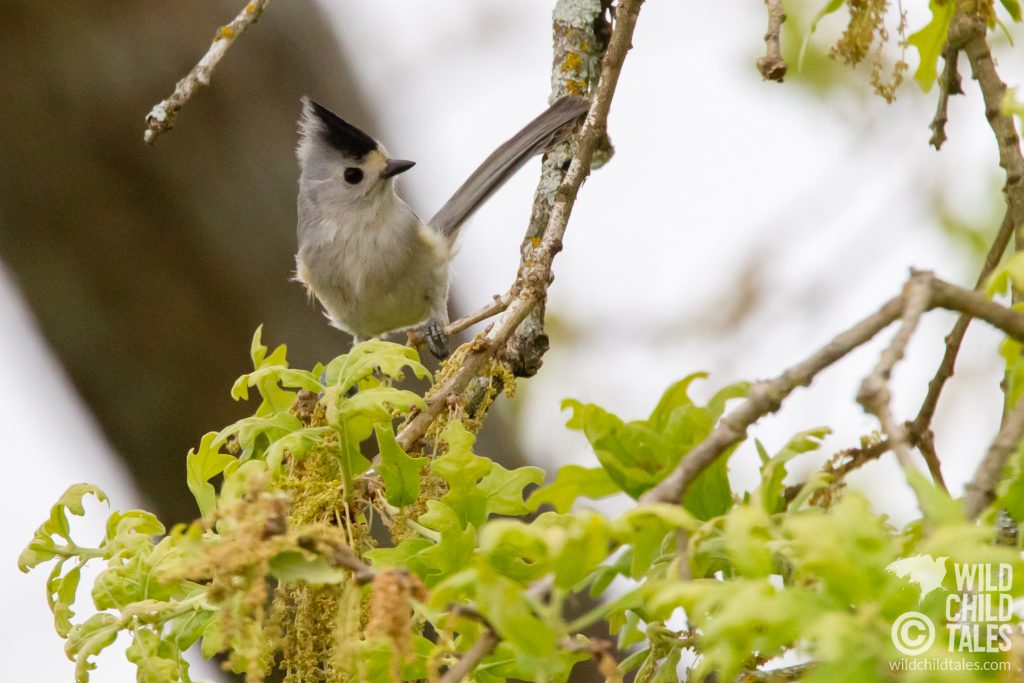
For the Love of a Titmouse
From my first sighting of a black-crested titmouse in Austin, I was hooked. So far, my photo library has more than 175 photos of them, which means I’ve probably taken something in the ballpark of 8,000 pictures of them – only about 2% of what I shoot makes it past the cutting room floor.
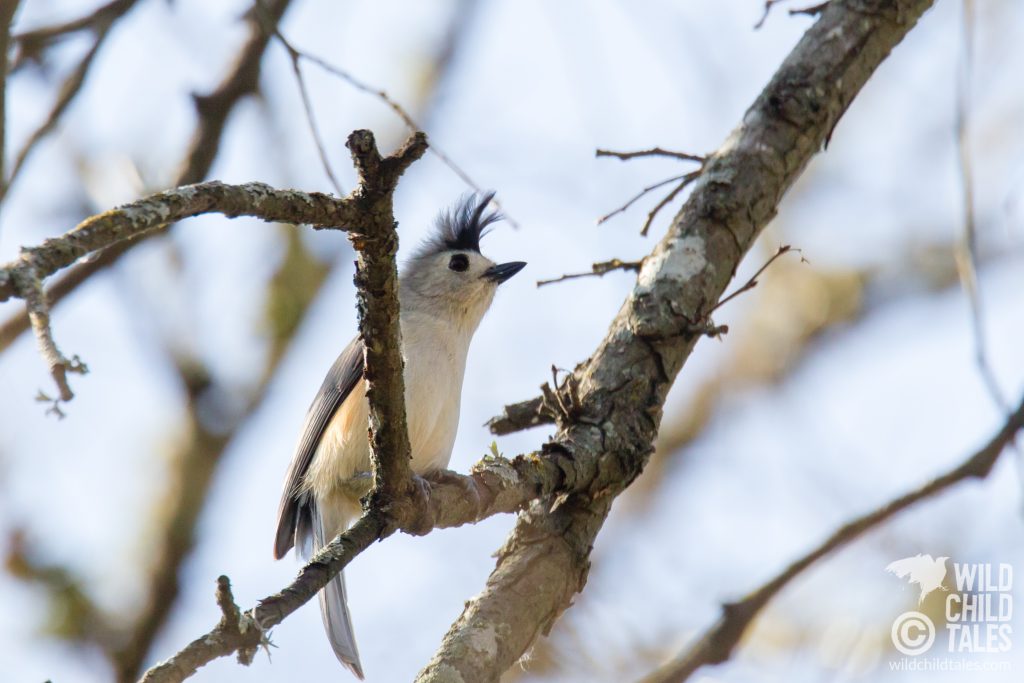
I couldn’t get enough of the titmouse’s quick, curious foraging or the array of delightful noises they made. In fact, I quickly began to refer to all titmice as “Squeak” – in part as a descriptor of them, and in part a descriptor of the noise they kept eliciting from me.
So last year, I already had many hours of observation under my belt when I had another of those “ah-hah” moments. How come some of these titmice had a chestnut-colored spot between their beak and their crest?
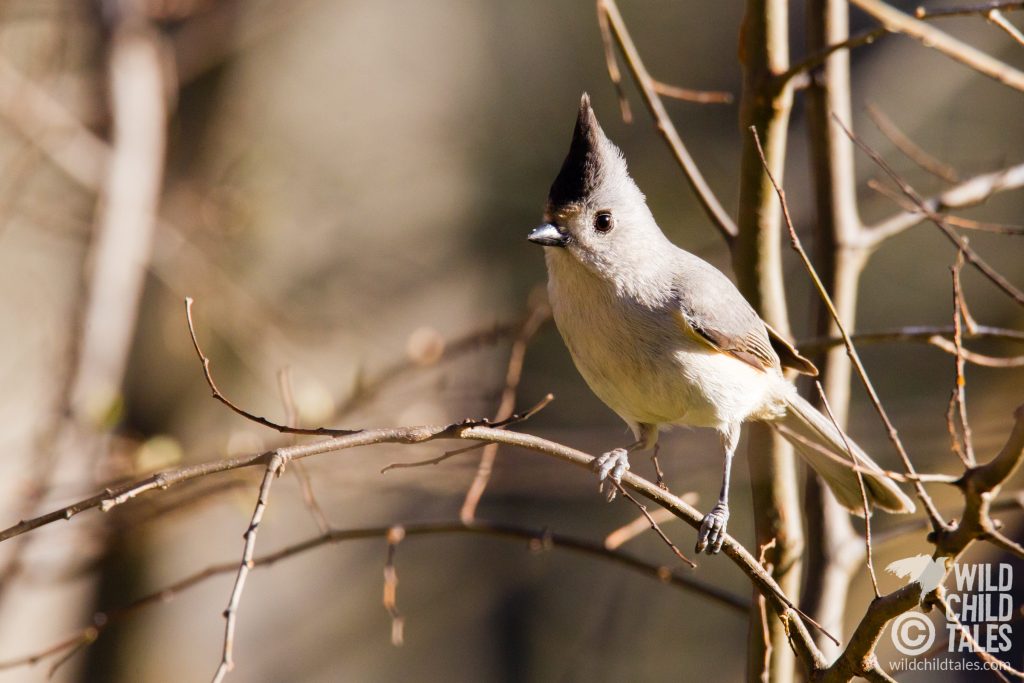
Location, Location, Location
As it turns out, Austin is located in a pretty small sliver of the Unites States where the Tufted Titmouse and the Black-crested Titmouse crossbreed.
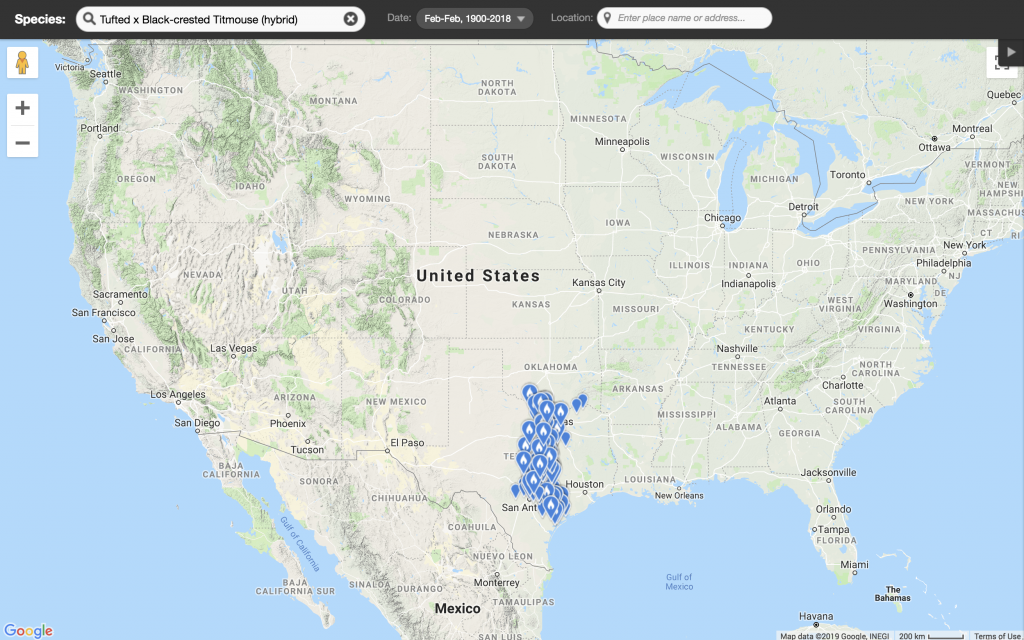
So how can you tell the difference? A little Googling started to pull up some good resources:
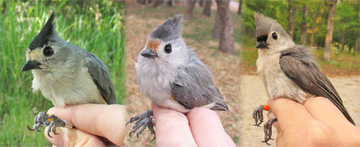
Nestwatch.org has a great article on hybridization of titmice in Texas that offered some good started information.
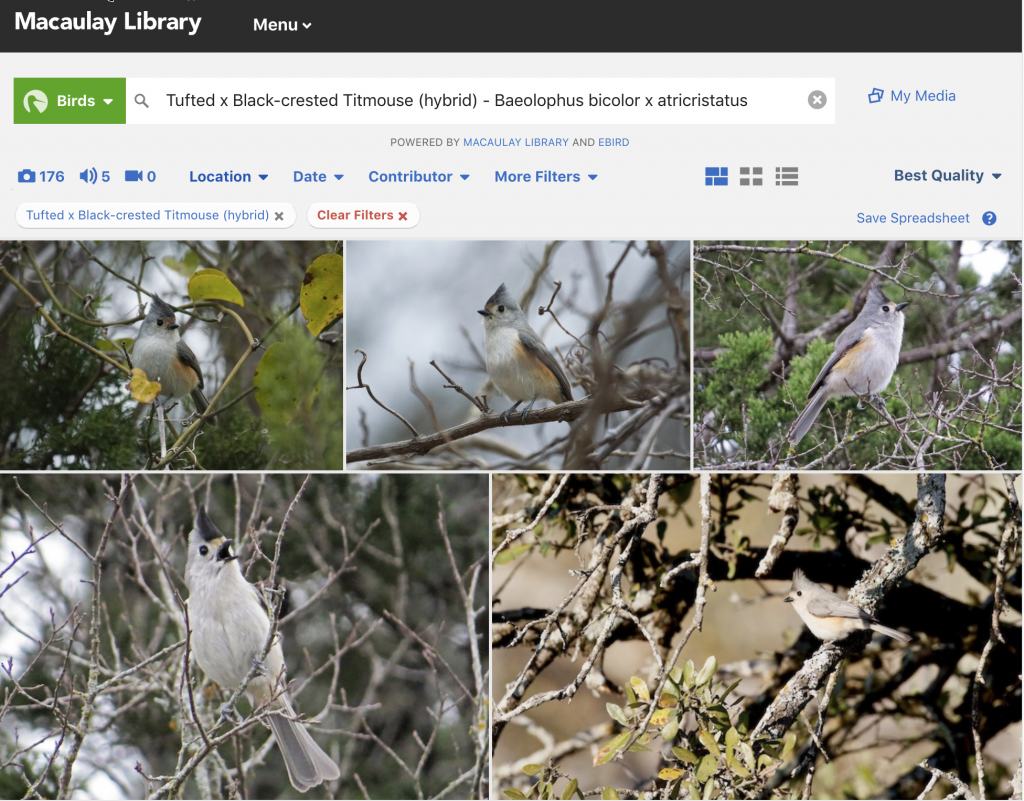
The Macaulay Library is an amazing resource for referencing species photos and audio. Everyone who uploads photos to eBird has their media archived here, so it’s quite a treasure-trove. Click here to see the results for hybrid titmice.
Uncertainty Is Part of Learning
I had been SO SURE that I had obvious hybrid titmouse photos to share. However, as I poured over the photos I had, I began to doubt myself. How much chestnut was enough to count?
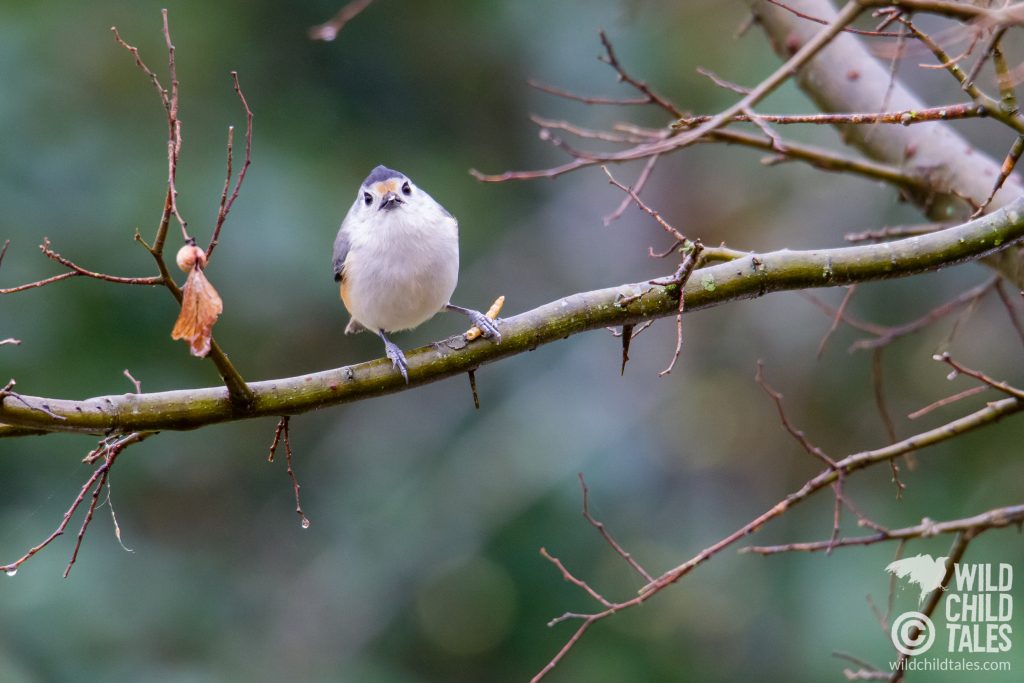
I finally worked myself around to the conclusion that I think a lot – if not all – of our local titmouse population has some hybridization in them. It’s rare to see an individual with a super-pale spot above their beak…most have some degree of medium to darker chestnut coloring.
That’s the thing about hybrids…short of being an uber-nerd researching JUST that species, I don’t know that I would always feel 100% confident in calling the ID. That’s ok too…it’s part of the process of learning.
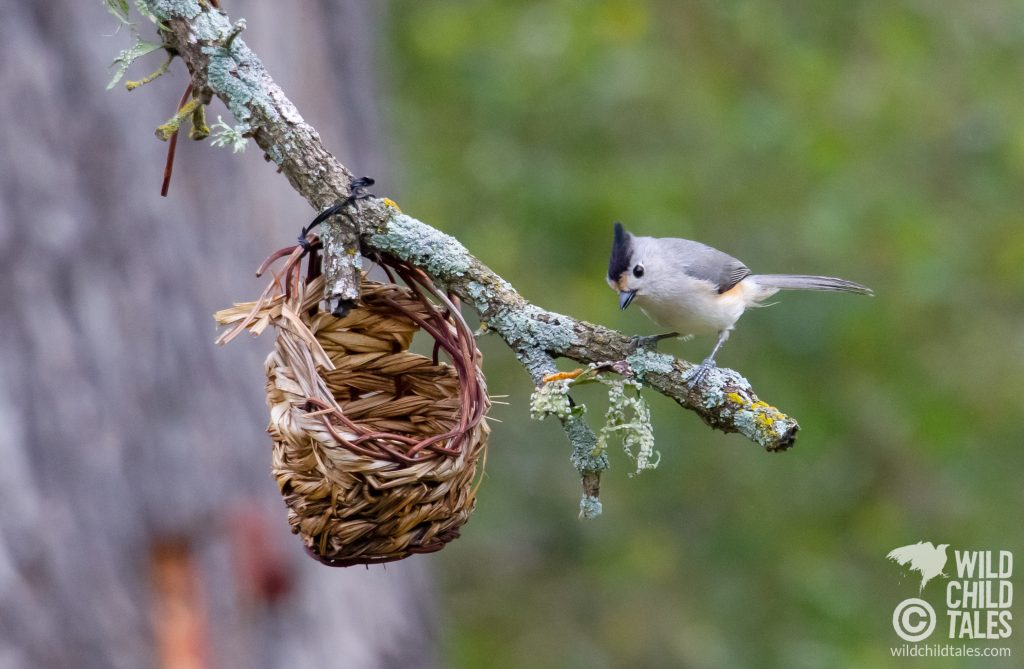
It helps to plug into other communities of birders who have more knowledge than you do – there are several Facebook groups that I have found very helpful. I have also found that with more rare species, eBird staff who review my IDs will sometimes confirm or correct my IDs and ask me to update my submission. Every time this happens, I feel grateful that the world of birding is so nurturing and engaged in helping people get it right.
I started this blog because I have so many cool, fun, interesting stories to share about wildlife – but I think it’s equally valuable to share the process of learning about it…the mistakes, the learning curve, the uncertainty. Every journey we take is full of those kinds of moment, and they are just as important as the perfectly executed, wildly successful, outrageously fun moments. I hope you guys enjoy the full 360 viewpoint that I endeavor to offer!
Leave a Reply